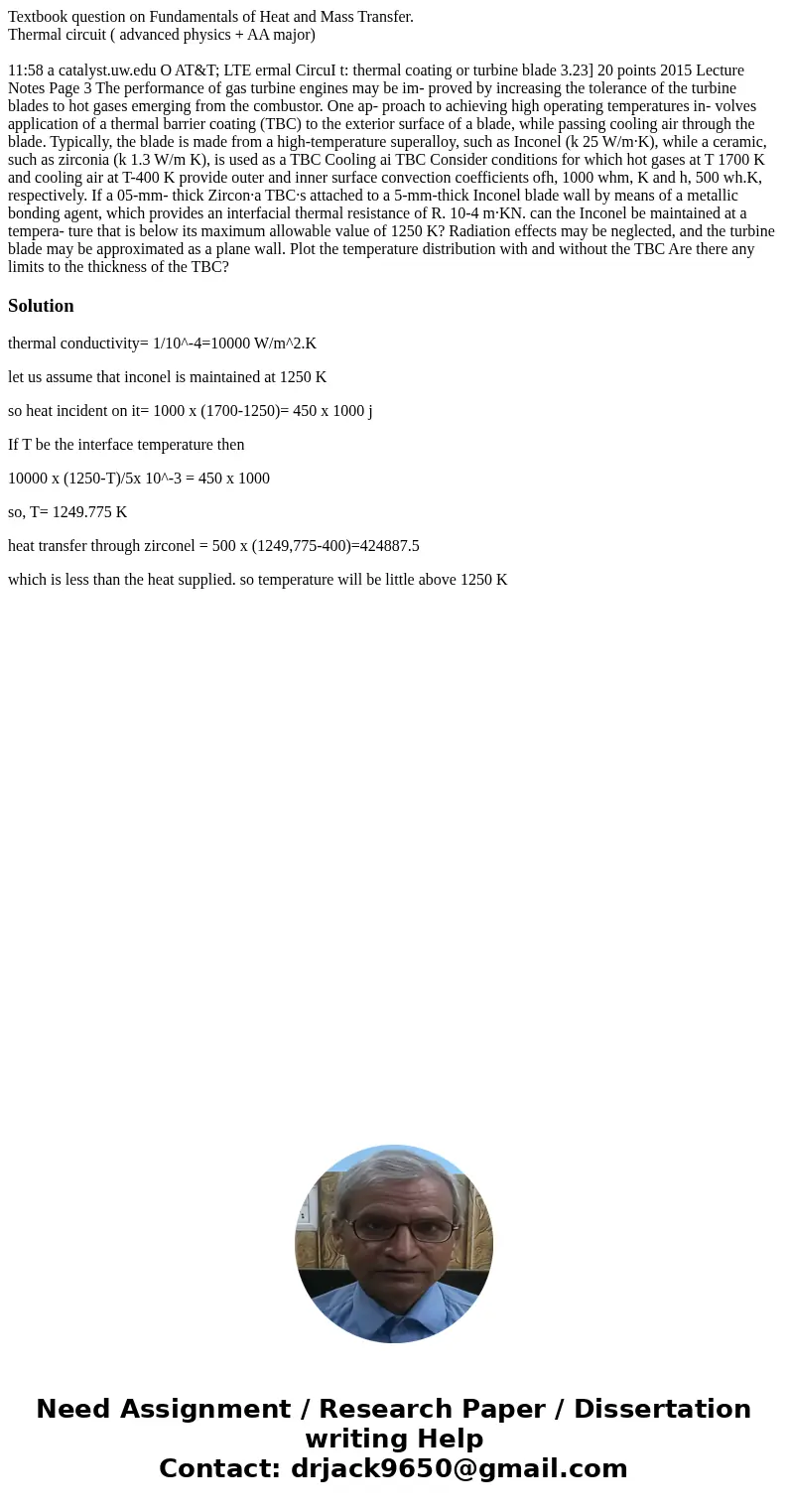Textbook question on Fundamentals of Heat and Mass Transfer.
Thermal circuit ( advanced physics + AA major)
11:58 a catalyst.uw.edu O AT&T; LTE ermal CircuI t: thermal coating or turbine blade 3.23] 20 points 2015 Lecture Notes Page 3 The performance of gas turbine engines may be im- proved by increasing the tolerance of the turbine blades to hot gases emerging from the combustor. One ap- proach to achieving high operating temperatures in- volves application of a thermal barrier coating (TBC) to the exterior surface of a blade, while passing cooling air through the blade. Typically, the blade is made from a high-temperature superalloy, such as Inconel (k 25 W/m·K), while a ceramic, such as zirconia (k 1.3 W/m K), is used as a TBC Cooling ai TBC Consider conditions for which hot gases at T 1700 K and cooling air at T-400 K provide outer and inner surface convection coefficients ofh, 1000 whm, K and h, 500 wh.K, respectively. If a 05-mm- thick Zircon·a TBC·s attached to a 5-mm-thick Inconel blade wall by means of a metallic bonding agent, which provides an interfacial thermal resistance of R. 10-4 m·KN. can the Inconel be maintained at a tempera- ture that is below its maximum allowable value of 1250 K? Radiation effects may be neglected, and the turbine blade may be approximated as a plane wall. Plot the temperature distribution with and without the TBC Are there any limits to the thickness of the TBC?
thermal conductivity= 1/10^-4=10000 W/m^2.K
let us assume that inconel is maintained at 1250 K
so heat incident on it= 1000 x (1700-1250)= 450 x 1000 j
If T be the interface temperature then
10000 x (1250-T)/5x 10^-3 = 450 x 1000
so, T= 1249.775 K
heat transfer through zirconel = 500 x (1249,775-400)=424887.5
which is less than the heat supplied. so temperature will be little above 1250 K

 Homework Sourse
Homework Sourse